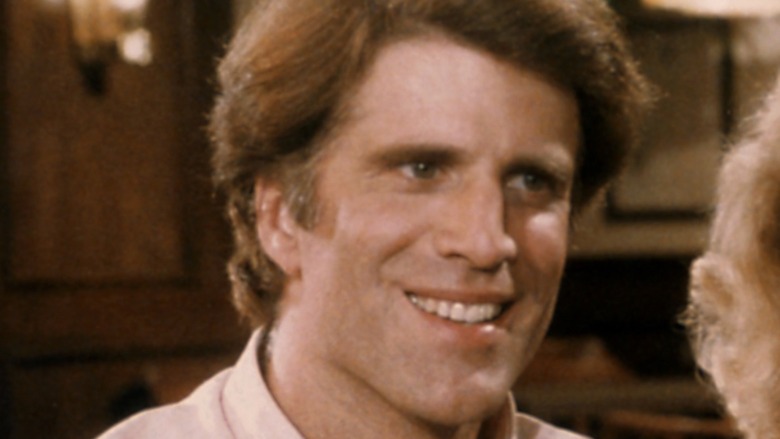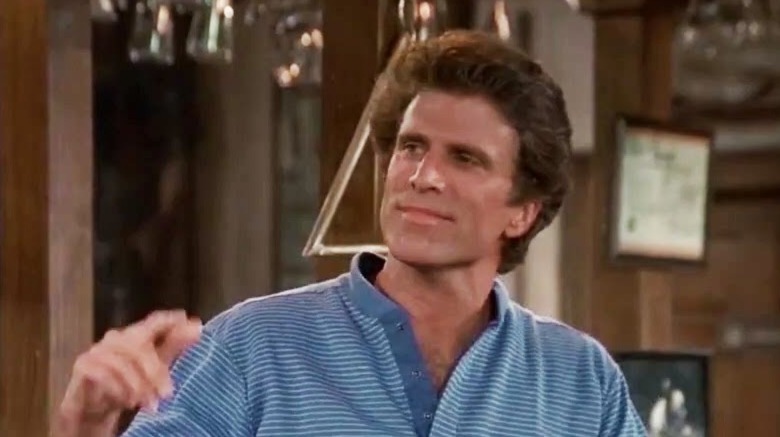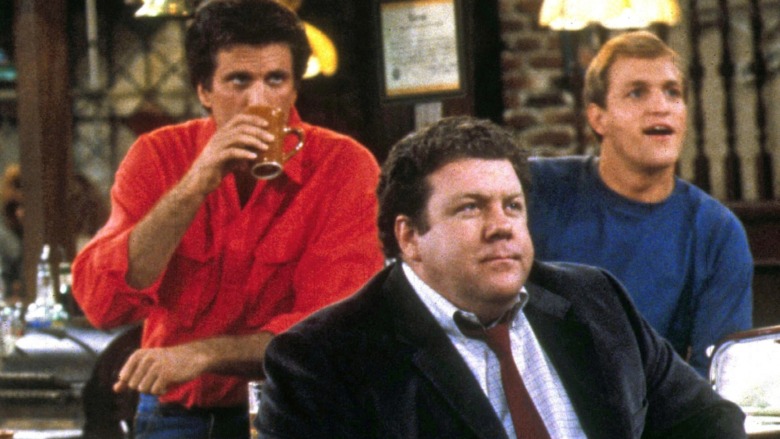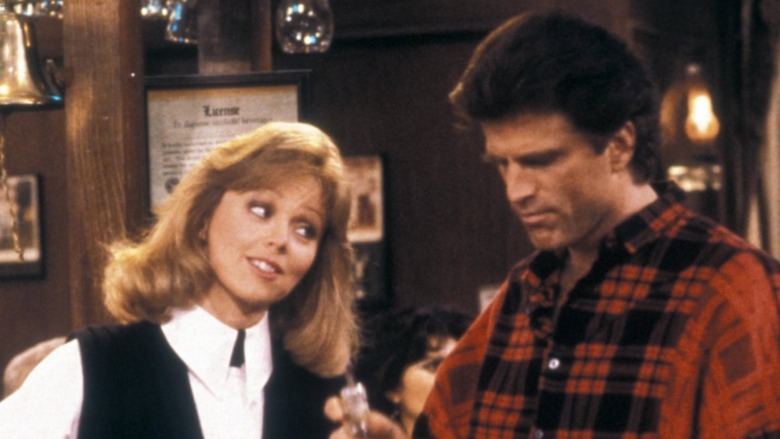The Cheers Theory That Changes Everything
Over eleven excellent seasons of "Cheers," viewers watched former Red Sox pitcher Sam Malone (Ted Danson) manage the subterranean Boston bar of the same name and interact with his memorable customers and staff. Those characters included the intelligent yet distracted blonde waitress Diane (Shelly Long), a lovable older bartender named Coach (Nicholas Colasanto), the uniformed mailman Cliff (John Ratzenberger), and a psychiatrist named Frasier (Kelsey Grammer) — whose spinoff show, "Frasier," would run for another eleven seasons.
While "Cheers" may not have been the first or the last show set in a bar, it found a potent combination of good writing, romantic tension, and Boston charm that help the show earn dozens of awards. However, while no one is claiming that the "Cheers" bar setting needs to be totally unique, for years, rumors have circulated on Reddit regarding another show, "Park Street Under," whose similarities were just a little too exact to be ignored.
That show, it was said, revolved around a former Red Sox player turned bar owner who ran a Boston bar that was also located underground. The retired athlete ran the bar with the help of a distracted blond waitress with a photographic memory and an affable older bartender. Patrons of the bar included customers such as an always in uniform subway driver and his friend, a nosy psychiatrist. The show was on local Boston TV for a single season starting in 1979 — just three years before "Cheers" aired its first episode in 1982.
These similarities have led to accusations that range from inspiration to plagiarism. Here's the "Cheers" theory that changes everything.
Park Street Under was a little known regional sitcom produced by a Boston TV station
When looking at the similarities between "Park Street Under" and "Cheers," it's helpful to start with an understanding of just how unique "Park Street Under" was, as this is an essential factor in how little-known it would ultimately be.
The reason that so few people saw "Park Street Under," or even knew about it, was that this regional sitcom was produced in the Boston area and then, critically, only aired in the Boston area. In the Vineyard Gazette, head writer Arnie Reisman explained that a desire to save money on syndicating expensive sitcoms from studios in Los Angeles and New York led the station to produce its own, which became "Park Street Under." The show ran for 36 episodes before being relegated to history as a largely unsuccessful and unremarkable experiment in locally produced television.
Information about "Park Street Under" remains scarce. The station that produced and broadcast it, WCVB, has no mention of it outside the brief description, "WCVB is the first station in the country to produce a weekly half-hour sitcom, 'Park Street Under.' The program is said to be a precursor of 'Cheers.'"
There's no IMDb entry for the program, and its Wikipedia page is split between a brief description of the show and information about the former Park Street subway station.
The cast and creators of Park Street Under noticed Cheers' similarities right away
While "Park Street Under" was never anything besides obscure, the show's creators got wind that something suspicious was going on before "Cheers" even aired.
Writing in the Vineyard Gazette, Arnie Reisman remembers, "A fan of Park Street Under who also happened to be a friend at NBC saw the Cheers pilot and gagged. He smuggled out a video copy and sent it to me. I watched, gulped and called Robert Bennett, WCVB's enterprising president at the time." Reisman and president of the station, Robert Bennet, noticed the similarities right off the bat, but declined to take legal actions to avoid being labeled "a troublemaker."
The cast was far blunter in their assessment of similarities between "Park Street Under" and "Cheers." Steve Sweeney, who played Augie, the former Red Sox players turned bar owner, told Boston Magazine, "There was no question. It was a direct rip-off. It felt like a personal rip-off for me." Karen McDonald, who played Bonnie, the blonde waitress with a photographic memory, said, "We didn't know all the details, but we heard from the people at WCVB about this new show that was a rip-off of Park St. Under. We saw it and were like, Wow."
The creators of Cheers have long denied a link to Park Street Under
The question of the origin of Cheers has long been suspect in the mind of WCVB president Robert Bennet. According to Boston Magazine, "Bennett had been aiming for a job with ABC and had made a reel of WCVB programming that was circulated to network development offices, fueling theories that someone had seen it and lifted the idea for Cheers."
Boston Magazine notes that "Cheers" creator James Burrows has long denied any connection to or knowledge of "Park Street Under" and has always said that his inspiration for "Cheers" was Duffy's Tavern, his father's radio program. The other two creators of the show, brothers Glen and Les Charles, have consistently cited the Bull & Finch, whose exterior stands in for "Cheers" itself, as a primary source of inspiration.
Making objective comparisons between the two shows even more difficult is the scarcity of any remaining footage from "Park Street Under." Dan McCarthy of Boston Magazine managed to track down a few episodes and said, "To me, the things that are so lovable about 'Park Street Under' — the local feel, the rough-around-the-edges inside jokes that make it seem familiar — aren't the things that made 'Cheers' such a hit."
Anyone wanting to see clips of Park Street Under can find them on the blog That's Entertainment. However, it's worth noting that author Jackson Upperco also concludes, "My impressions of both episodes and the research I've done have left me believing 'Park Street Under' doesn't have a legitimate claim for impacting 'Cheers.'"



